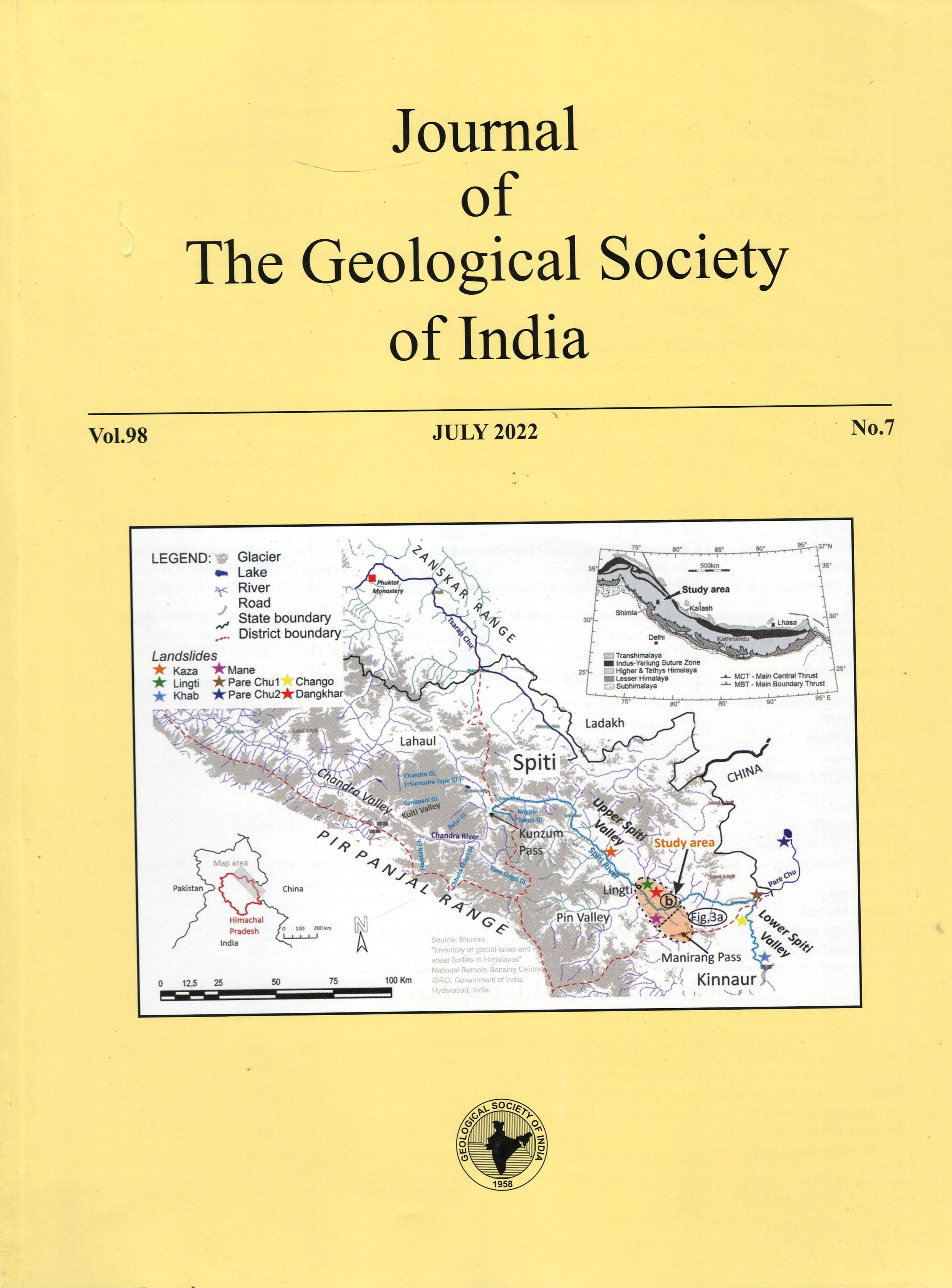Geologic, Geomorphologic, and Climatic Preparatory Conditions for the Evolution of the Dangkhar Landslide, Himachal Pradesh, India
DOI:
https://doi.org/10.1007/s12594-022-2093-zKeywords:
No KeywordsAbstract
With an estimated volume of approximately 15 to 20 km³, the Dangkhar landslide located in the Spiti valley, Himachal Pradesh, India, is one of the largest landslides on earth. Its initiation is geochronologically constrained to have occurred during the late Pleistocene and may be related to glacial retreat following local last glacial maximum, which, depending on the source, occurred around 80 to 30 ka years ago. There is significant value in understanding the causative factors contributing to such an enormous and rare event. On the basis of comprehensive field studies and laboratory investigations, it is concluded that erosional, structural, and depositional features within and surroundings of the Dangkhar landslide are critical for understanding landslide initiation and its long-term behavior.
The landslide developed as a block slide along a synformal flexure, and through-cutting lateral valleys fulfill the kinematic conditions for creating a massive removable block of earth. Deposits of weakly cemented and crudely bedded carbonate breccias in the landslide’s toe region represent depositional activity during recession of the main valley glacier, and cross-cutting structural relationships involving ground ruptures (lineaments) and rock glaciers in the head region record long-term, ongoing landslide deformations subsequent to its initiation. Stable isotope signatures of samples indicate presence of freshwater associated with the formation of breccia deposits.
While many details concerning the timing and development of the Dangkhar landslide remain unknown, recent studies illuminate some very important aspects. The glacial history of the Spiti valley combined with structural kinematics are clearly important factors concerning landslide development. Also important are constraints concerning the minimum age of landslide initiation after recession of a valley glacier, and structural evidence documenting long-term ongoing slope deformations.

 Markus Kaspar
Markus Kaspar






